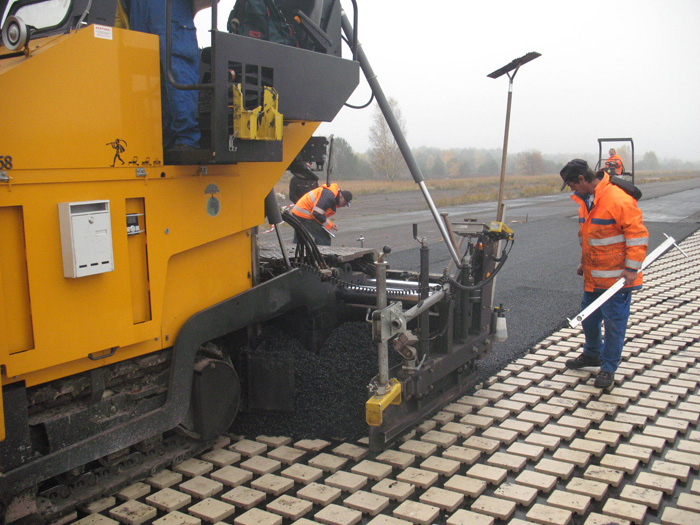
Manuel Männel – Manuel.Maennel@MuellerBBM.de
Müller-BBM
82152 Planegg
Germany
Jens Forssén – Jens.Forssen@Chalmers.se
Bart van der Aa – Bart.Vanderaa@Chalmers.de
Applied Acoustics
Chalmers University of Technology
41296 Gothenburg
Sweden
Popular version of paper 2aNSa8
Presented Tuesday morning, June 4, 2013
ICA 2013 Montreal
Noise pollution is a major environmental problem within well-developed industrial countries and emerging nations respectively. The main source of traffic noise is road traffic, which is expected steadily to increase. While the development of the road network still spreads, the density of population is on the increase, i.e., people move closer towards the roads, especially in urban areas. Beside people´s quality of living, factors like social costs and severe risks of health constitute the acuteness to develop appropriate measures of noise attenuation for road traffic.
Generally speaking there are two possibilities to reduce the noise level of traffic people are exposed to. One can either try to reduce the noise of the source itself or to affect the propagation of noise. A possible measure regarding the propagation of noise are noise barriers, but these are often not applicable in inner-city areas. So what about the source? Because of the fact that the noise of vehicles results from the tire-road-contact (at speeds over 20 – 25 mph in case of passenger cars), it is apparent that the starting point for noise abatement must be the tire-road-contact as the source of traffic noise. The road surface has a great potential in this respect. For these reasons low noise road surfaces were developed, which are already in practical use on inner-city and rural roads.
Low-noise road surfaces can be built with small grain sizes of the single stones in the asphalt and a smooth surface to reduce the tire-vibrations, but this works only for passenger cars and their tires. As soon as there are trucks driving on a road the only way to gain significant noise reduction with a road surface is to use porous asphalt. Such porous asphalts have void contents of approximately 25%. This void content makes the road surface sound absorbing so that parts of the sound emitted by the tire road contact is killed out right there where it is produced. However, the absorbing characteristics of porous road surfaces cannot be fitted very well to the sound of the tire road contact. Buried resonators can now be used as an additional absorber being tuned to the frequency range where the porous asphalt does not show a good absorption. Which such resonators it is possible to create a much better absorbing road surface being tuned to the tire-road noise to be damped. Such a resonator consists of a hollow container with a neck (rather like a bottle). The frequency where the resonator absorbs sound can be tuned by modifying the neck´s cross sectional area and length and the container´s volume, i.e. you can tune it according to the spectral characteristics of road noise. These resonators can then be combined with porous asphalt by burying them – which means basically covering them with porous asphalt.

Figure 1: Resonators (yellow elements) on the bedding layer of a road being covered with porous asphalt.
Buried resonators affect the acoustical properties of porous asphalt in two ways: a) they attenuate sound during propagation over the road surface, and b) they reduce the sound amplification associated with the geometry of the tire-road contact. By combining porous asphalt layers with buried resonators you can improve the noise reduction capability of a road by about 3 dB. Imagine, a car on a road produces a noise level of e.g. 90 dB, and you have another car next to it (also 90 dB), the resulting level will be 93 dB (regarding sound power). So a reduction of 3 dB means a reduction comparable to a decrease of the number of vehicles on the road by a factor of 2.
Pass-by measurements made on a test section of a highway with porous asphalt and buried resonators after three years under traffic have indicated that the resonators reduce the sound pressure level by the original amount (versus without resonators) of approximately 3 dB - 4 dB for passenger cars and about 2 dB for heavy trucks (for a 1.2-m-high receiver at 7.5 m distance). This means that resonator-improved porous asphalt can yield useful traffic noise reduction not only immediately after construction but for several years.
Another benefit of using buried resonators is that they can be made to work without impairing the access to the surface. Noise barriers are in contrast to that not only a border for the sound but also for pedestrians trying to cross the road and hinder the free view over an area. On porous road surfaces with integrated resonators passenger cars and trucks can drive and pedestrians could walk along and across the road as the sound mitigation measure is an invisible feature of the road surface itself. The invisible character of the resonators also means that there is no extra space necessary for the installation.